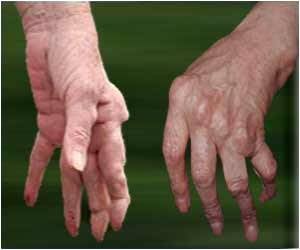Most people know that heroin is a dangerous drug, but its cousins, the legal, pharmaceutical opioids, such as codeine or hydrocodone, must be safe, right?

‘Rates of overdoses and deaths attributable to opioid abuse are alarming lawmakers and health care providers at all levels of government and health care.’





"Opioid abuse is growing exponentially," said Alva O. Ferdinand, assistant professor at the Texas A&M Health Science Center School of Public Health. Rates of overdoses and deaths attributable to opioid abuse are alarming lawmakers and health care providers at all levels of government and health care. "The problem is particularly severe in rural regions of the United States, where, paradoxically, there may be fewer health care providers but a higher prevalence of opioid users, especially among vulnerable and high-risk groups such as pregnant women and teens," said Jane N. Bolin, professor at the School of Public Health and director of the Texas A&M Southwest Rural Health Research Center, which has made the rural opioid epidemic one of its most important research priorities.
Taken as prescribed, opioids can be used to manage pain safely and effectively by reducing the intensity of pain signals reaching the brain. Still, people on high daily doses of opioid pain relievers - even those legitimately prescribed - are at a higher risk of overdose. "In the last couple of years, four studies have found that as the dose of opioids is increased, the risk of overdose also increases," Ferdinand said. "It is important to note that these studies were based on actual prescriptions and legitimate therapeutic use of these drugs." Even a single large dose can cause severe respiratory depression and death.
"I want to stress that we must be thoughtful and deliberate when developing policies and interventions to address prescription drug overdose," Ferdinand added. "Our goal is to reduce opioid abuse and overdose while ensuring patients with pain are safely and effectively treated." She presented these issues at the National Rural Health Conference last month, as she and other rural health stakeholders discussed how to inform policy to combat the epidemic.
Pharmacists find themselves on the front lines of the crisis, asked to serve almost as drug cops while still providing for their patients who are in pain.
Advertisement
"Studies have shown a number of groups at high risk for overdose, and understanding these groups will help us develop effective interventions." Ferdinand said. The groups include those with mental illness or a history of substance abuse, as well as Medicaid populations, low-income communities and those living in rural areas. "Opioid abuse is especially problematic in rural areas," Ferdinand said, "due to general diminished access to health care and substance abuse treatment relative to more urban areas." New Mexico and West Virginia-the states with the highest rates of overdose in 2008-had rates nearly five times that of Nebraska, the state with the lowest rate.
Advertisement
"People who abuse multiple substances are at risk because they often combine drugs that can lower consciousness and decrease breathing," Ferdinand said. "Drugs commonly taken together include opioid pain relievers, benzodiazepines, muscle relaxants and alcohol. This is certainly a deadly combination."
So-called 'pill mills' are a common source of prescription opioids, despite efforts of the United States Department of Justice. They tend to have several common characteristics. Most of the time pill mill physicians have action against their license in another state and often are the subject of complaints from pharmacists. They generally have a lot of traffic, with 'patients' congregating in the parking lot and then being in and out of doctor's office in minutes. "Generally, these are cash-only businesses," Ferdinand said. "And they're a huge money maker."
The CDC has recently issued new guidelines for primary care providers about prescribing opioids. Essentially, they are recommending that physicians consider options other than opioids for treating chronic pain and suggesting that when opioids are used, the lowest possible dose should be prescribed and the patients closely monitored.
Prescription drug monitoring programs are state-run electronic databases used to track prescribing and dispensing controlled prescription drugs to patients. Such programs can help identify people who are 'doctor shopping', or obtaining large quantities of controlled substances from multiple doctors or pharmacies - a practice that puts people at higher risk of overdose. The CDC recommends that these programs link electronic health records systems so that information is better integrated into health care providers' day-to-day practices.
Oddly, it seems that even when armed with information about prior abuse, physicians may still prescribe the drugs: 91% of people who overdosed on opioids were still prescribed opioid-painkillers later, and 70% of those got the prescriptions from the same physician who treated them for the overdose, according to one study.
Still, even if authorities are able to reduce the number of prescribed opioids, those who are addicted will simply find something else to fill that need, whether it is illegal heroin or illicit prescriptions from a nearby, more-lax state.
Naloxone (also known by its brand name, Narcan) is a prescription drug that can reverse opioid overdose, but it is often not available when needed because it is by prescription only and prescribers generally don't write prescriptions for patients they have not personally examined. "Many overdose deaths could be prevented if states had fewer legal barriers to the use of Naloxone," Ferdinand said. "If prescribers acting in good faith may prescribe naloxone to persons who may be able to use it to reverse overdoses and bystanders weren't faced with possible legal action for administering the drug, so many lives could be saved."
The World Health Organization agrees, saying, "Naloxone administered by bystanders is a potentially life-saving emergency interim response to opioid overdose." Because naloxone comes in a nasal spray version, it is relatively easy for someone without medical training to administer it.
In some cities and towns, emergency medical personnel do carry naloxone, but since some addicts specifically seek out these places, knowing they will be less likely to die from an overdose, local governments might not want to endorse this practice - or at least not make it known if they do.
"Overdose bystanders may fail to summon medical assistance for fear of legal consequences," Ferdinand said, "so it is important to have laws in place to protect people who are calling for help." Recognizing this, 46 states and the District of Columbia have enacted statutes that expand access to naloxone or provide protections against legal action for bystanders when seeking help for an opioid overdose. In other words, even if they themselves possess a controlled substance, the 'Good Samaritan' who called for emergency assistance would not be prosecuted for breaking drug laws.
Opioid addiction treatment is notoriously difficult, but the most effective approach is combining medication and counseling. Three different drugs have been approved to treat opioid addiction. Two of them, buprenorphine and methadone, are opioid-based medications, so they themselves can be abused.
To try to prevent abuse of the medications that are supposed to be helping patients recover, strict regulations are in place for both of these medications. Methadone can only be provided in dedicated clinics, and far more patients need these services than the clinics have spots available.
"According to many doctors, the need for more providers to have access to buprenorphine and methadone is critical," Bolin said. "However, the regulations for becoming approved to provide this kind of treatment scare many doctors away."
Buprenorphine-which has a somewhat lower overdose risk than methadone - can be taken at home, but only when prescribed by qualified doctors who have taken an eight-hour course and applied for a special license. Those physicians who have held the special license for at least a year may prescribe buprenorphine to as many as 100 patients at a time, up from 30, which increases access to treatment. Still, even if all those who are permitted to prescribe buprenorphine did so to the maximum number of patients permitted by law (and most of them self-cap far lower than that), one million patients who could benefit from buprenorphine treatment would still be unable to obtain it.
To reduce the backlog, Health and Human Services (HHS) Secretary Sylvia Burwell announced that HHS will try to increase the number of doctors who prescribe the drug and will consider allowing each licensed physician to treat more patients at once.
Approval for a matchstick-sized implant called Probuphine that would release buprenorphine in a steady dose over six months was postponed by the Food and Drug Administration (FDA). An advisory committee recommended FDA approval in January 2016, citing the benefits of reducing the burden of a medication regimen. Those against it say it could also put people at greater risk by removing the patient-doctor connection.
Naltrexone, the third addiction treatment drug, works differently than methadone and buprenorphine. It prevents the euphoric and sedative effects of the abused drug if the person should relapse.
Those who are addicted to opioids aren't the only ones to suffer. Their family and friends are often hurt by their actions; their children are affected more directly, as the drugs can pass from mother to unborn baby.
Babies born addicted to opioids have a good chance at a full recovery, but often due to lack of appropriate oversight, they later die in their homes from accidental drowning or suffocation. In November 2015, President Barack Obama signed bipartisan legislation, called the Protecting Our Infants Act, that attempts to avert these tragedies by providing better care for both mothers and newborns.
The United States Senate recently passed the Comprehensive Addiction and Recovery Act, which includes a number of provisions to address the opioid epidemic, including making naloxone more widely available and expanding addiction treatment for people in jail. However, it doesn't provide any funding to pay for these initiatives, so critics-including President Obama-worry that nothing will happen.
Bolin pointed out the need for more education in this area, saying, "We would like to work with physicians, nurses and pharmacists in areas where there is a need for supporting health care providers who want to help opioid addicted patients or help teach vulnerable and teen patients that it is important to avoid these substances for their own health and the health of their babies."
Source-Newswise















